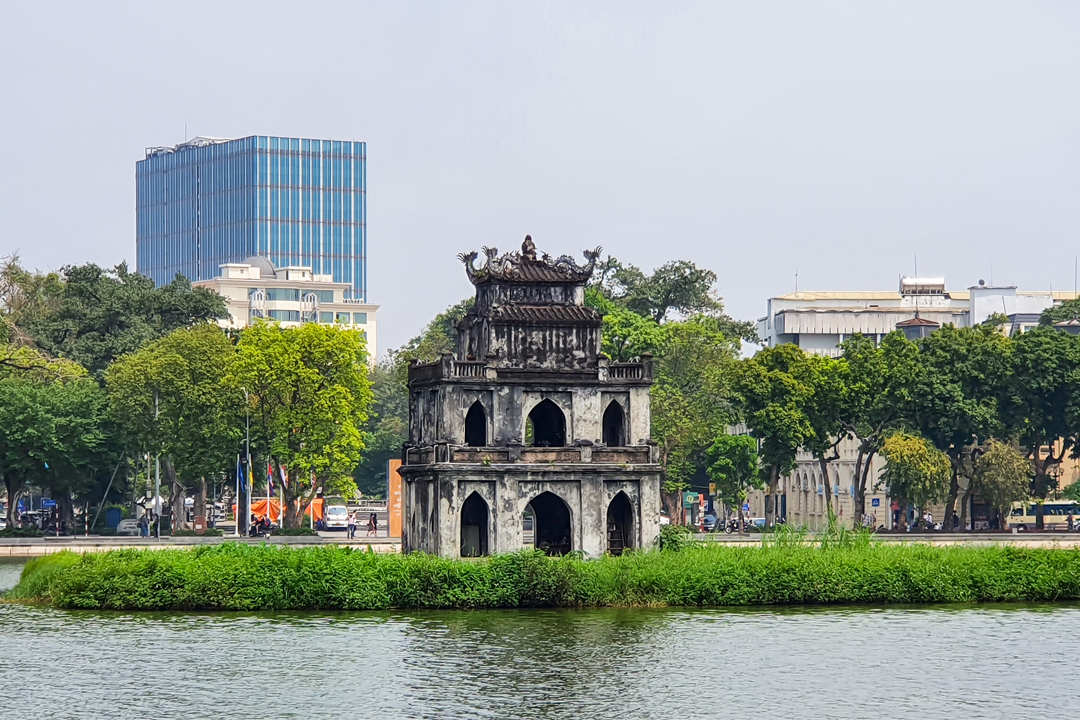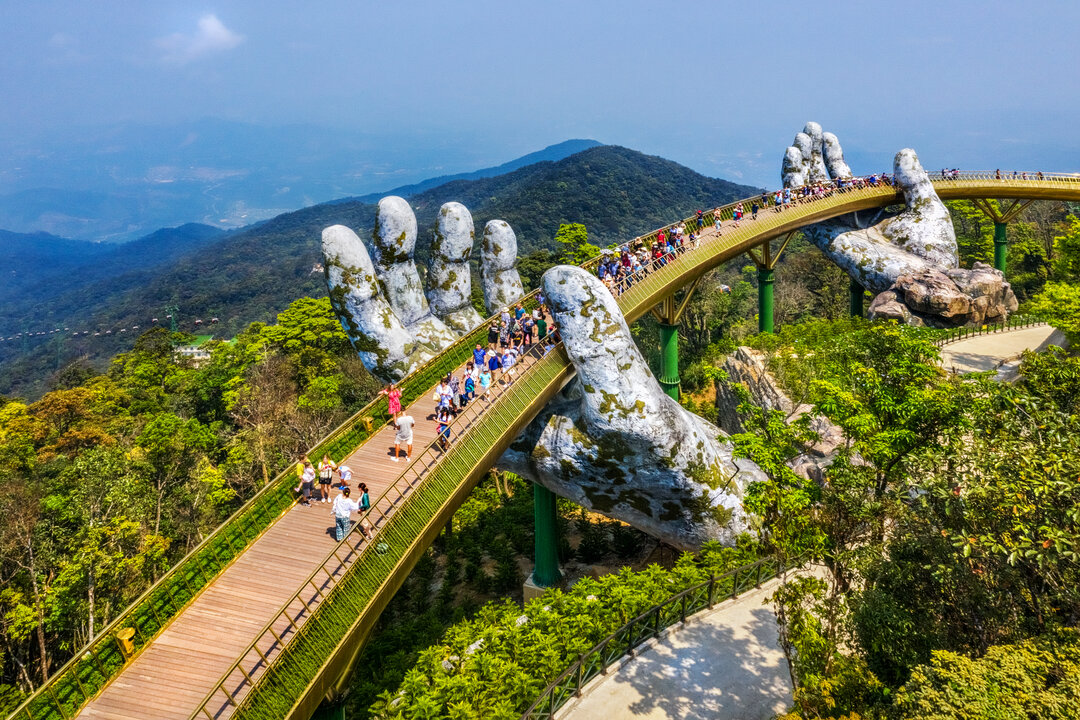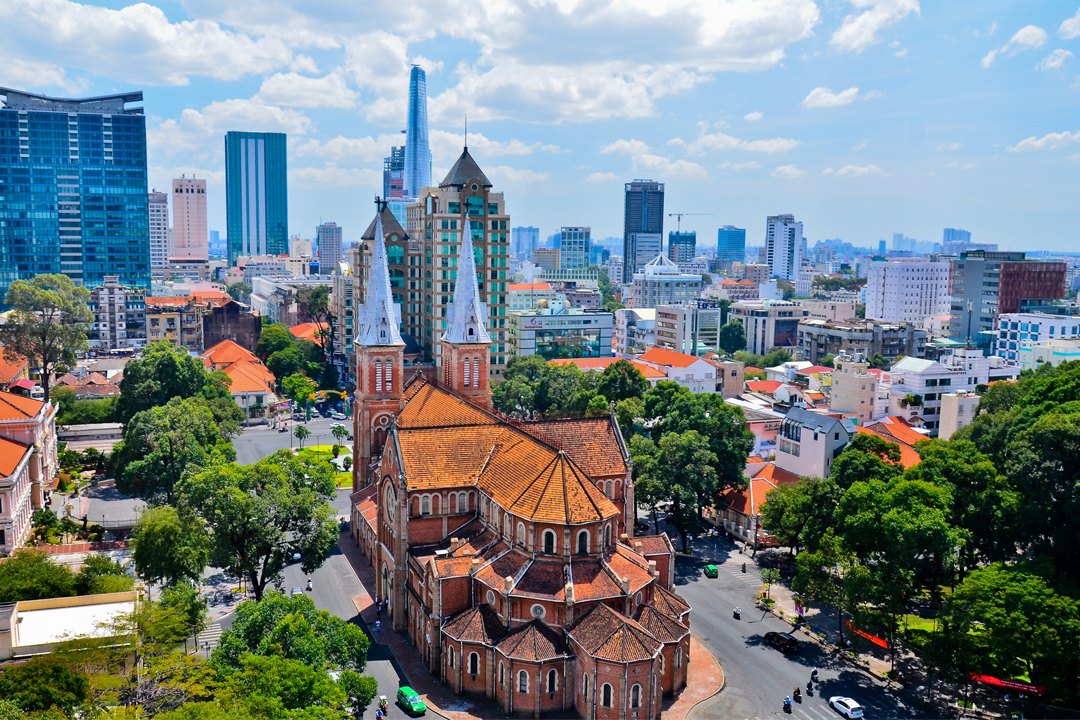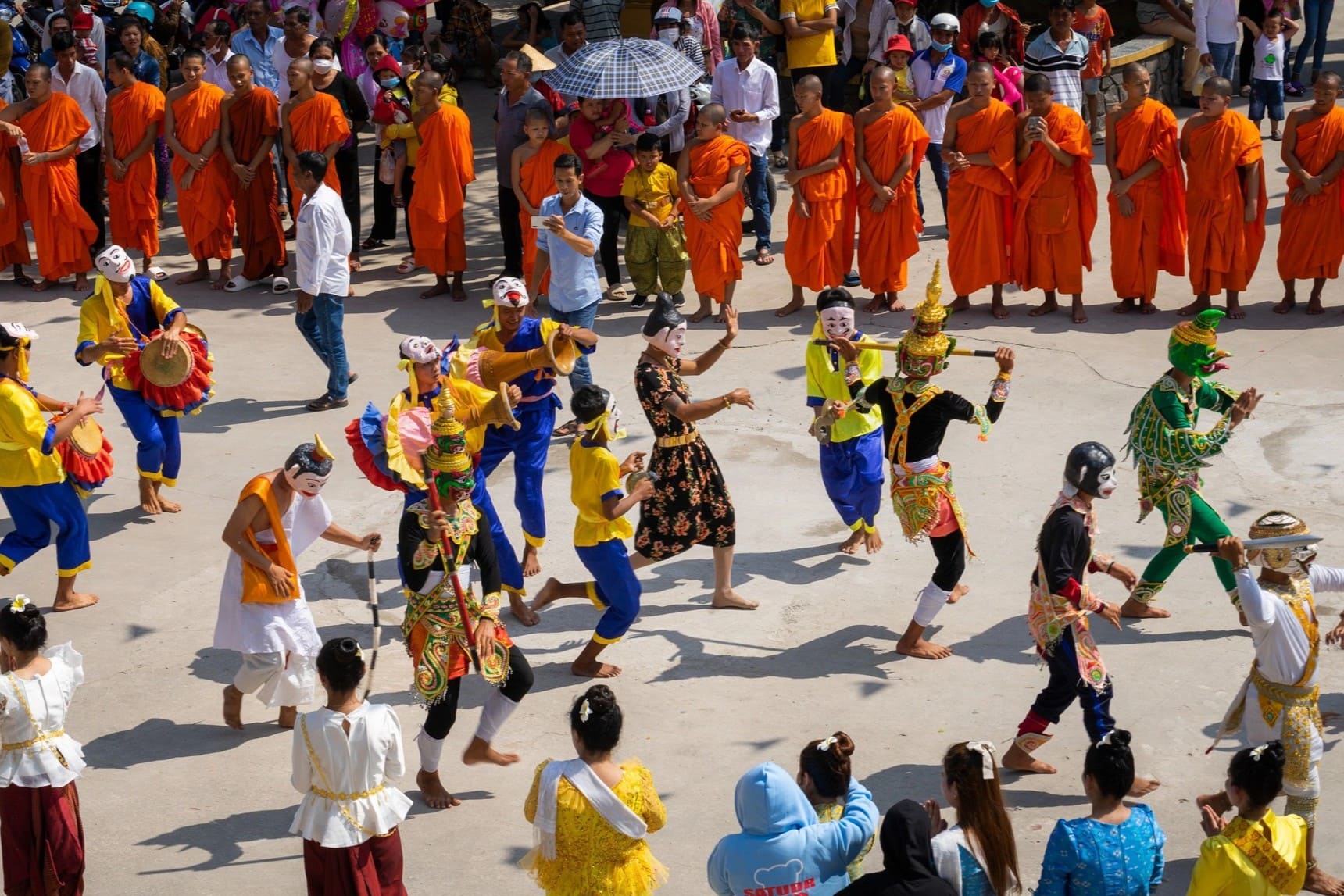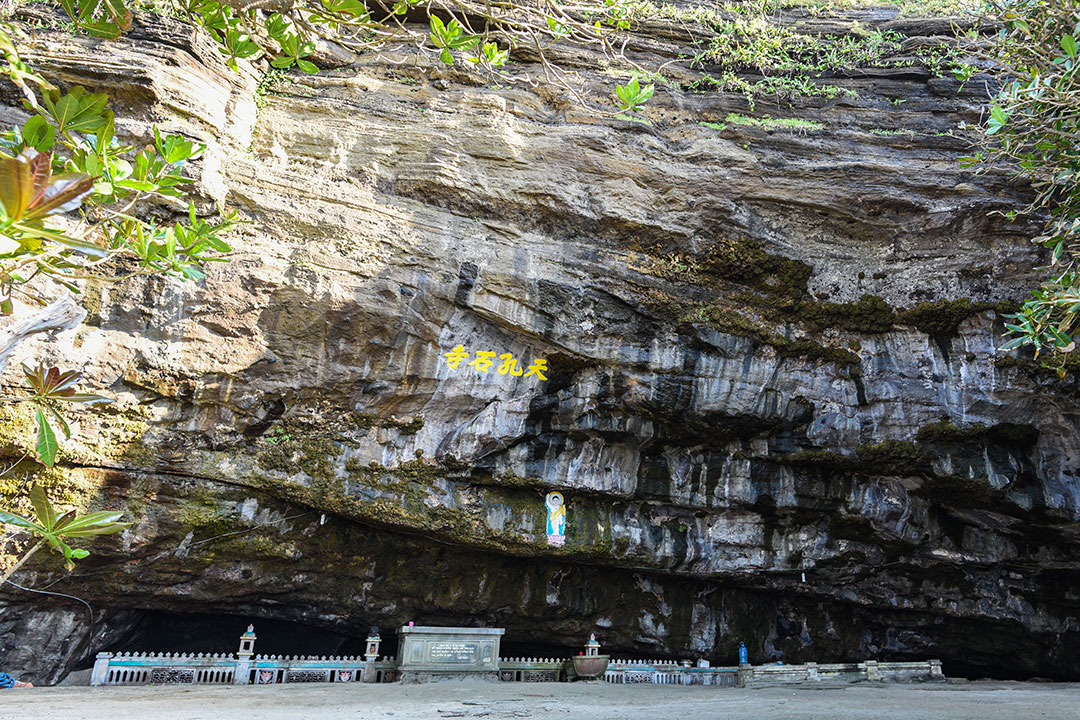Hang Pagoda (Phuoc Dien Tu): A Cultural And Spiritual Relic In An Giang
Hang Pagoda, also called Phuoc Dien Tu, is a revered Buddhist site in An Giang, steeped in history and spiritual significance. Nestled on the slopes of Sam Mountain in Chau Doc, it offers panoramic views of the surrounding countryside, creating a peaceful retreat for worshippers and visitors. Its distinctive cave architecture, ancient carvings, and serene ambiance make it a fascinating destination for both religious pilgrims and cultural explorers.
This article delves into the rich history of Hang Pagoda and its deep connection to Vietnam’s religious heritage. Readers will discover its unique architectural features, from intricate Buddhist motifs to the tranquil natural setting that enhances its spiritual allure. Those seeking immersive experiences can participate in Buddhist ceremonies, meditation retreats, and explore the local legends that have shaped the temple’s legacy.
Beyond its religious role, the pagoda is a hub of cultural festivities, drawing visitors to its annual events and traditional Buddhist rituals. To help you plan your visit, we provide insights into the best travel seasons, along with practical transportation options, whether by motorbike, car, or public transit.
For those eager to explore more of An Giang, Hang Pagoda’s location makes it a convenient gateway to nearby cultural and scenic attractions. Among them is Chau Phong Cham Ethnic Village, where visitors can experience the traditions of the Cham people. This guide ensures a well-rounded visit, offering essential tips for a meaningful journey.
History of Hang Pagoda (Phuoc Dien Tu)
Hang Pagoda, or Phuoc Dien Tu in An Giang was founded over a century ago, this sacred site in An Giang began as a retreat for monks seeking enlightenment in Sam Mountain's peaceful setting. Over time, it has developed into an important religious landmark, attracting both devotees and tourists.
Meaning of "Phuoc Dien Tu"
The name Phuoc Dien Tu means "Temple of the Fields of Blessings", symbolizing the Buddhist philosophy of cultivating merit and spiritual prosperity. "Phuoc" signifies good karma through kindness, while "Dien" symbolizes the mind as a field for spiritual growth. This name reflects the role of the pagoda as a sanctuary where believers come to purify their souls, seek wisdom and practice Buddhist teachings.
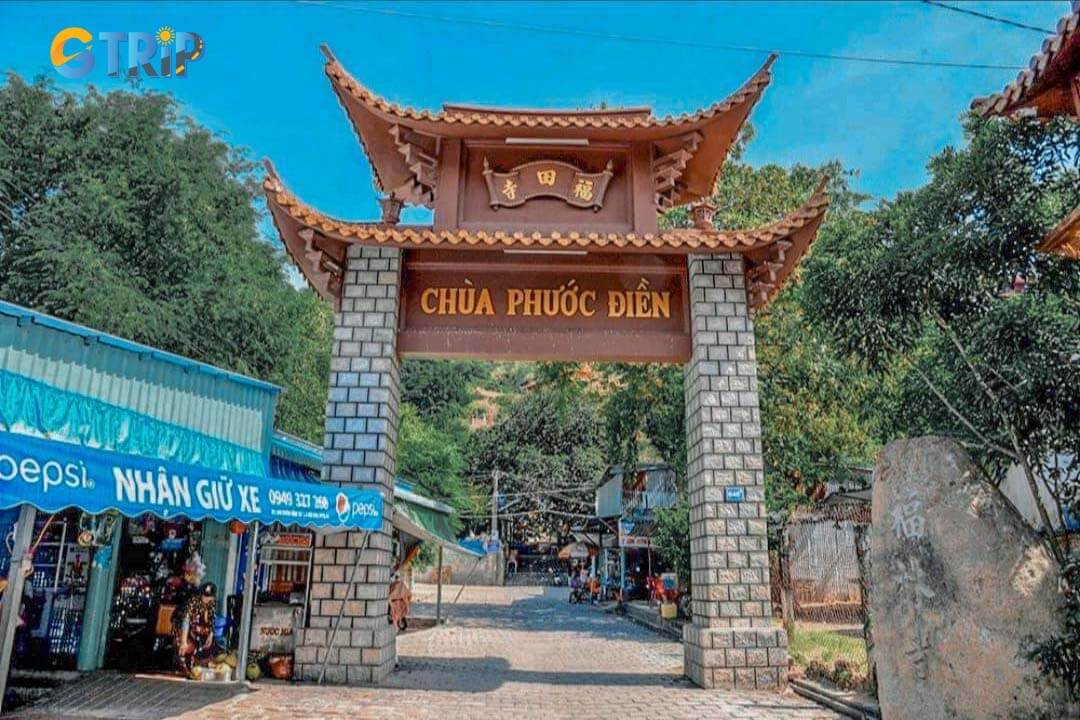
Phuoc Dien Tu symbolizes spiritual growth and merit, embodying Buddhist teachings on kindness and wisdom
The development of Hang Pagoda
Hang Pagoda (Phuoc Dien Tu) is renowned for its breathtaking scenery and the fascinating legends surrounding its origins and deep connection to this sacred land. According to folklore, the pagoda was founded between the 1840s and 1850s as a humble thatched retreat. Its founder, Le Thi Tho (1818 - 1899), known by her Buddhist name Dieu Thien, was a skilled seamstress from Cho Lon. However, drawn to Buddhism, she decided to leave behind worldly life and seek spiritual enlightenment on Sam Mountain.
It is said that Madame Tho’s life was filled with hardship. She was once married, but her husband’s harsh and domineering nature led to constant conflicts. Unable to endure such a life, she fled to Sam Mountain and sought refuge at Tay An Pagoda, where she shaved her head and became a nun, severing all ties with the material world.
However, after some time at Tay An Co Tu, she realized that the bustling environment did not provide the tranquillity she desired. Around 1850, she left in search of solitude and eventually discovered a small cave near the mountain. There, she built a simple retreat, which later became the foundation of Hang Pagoda.
One of the most well-known legends associated with Hang Pagoda is the story of two sacred serpents. A deep cave near Madame Tho’s retreat was home to a pair of giant pythons. Initially feared for their aggressive nature, they became peaceful after her arrival. Instead of preying on animals or attacking humans, they would quietly listen to her Buddhist chants. Over time, they were completely tamed, adopting a vegetarian diet and even guarding the retreat. Madame Tho affectionately named them Thanh Xa and Bach Xa (Green Snake and White Snake). Strangely, after her passing, the serpents disappeared without a trace, never to be seen again.
The truth behind this legend remains unknown, but in the sacred land of Sam Mountain, tales of wild creatures being transformed by Buddhist teachings are widespread. These stories serve as moral lessons, emphasizing compassion, forgiveness, and the power of spiritual enlightenment to bring about positive change.
In 1885, moved by Madame Tho’s virtue, a man named Phan Thong and the people of Chau Doc contributed funds to construct a more solid pagoda. The new structure featured a tiled floor, ironwood pillars, and a traditional curved tile roof. Later, in 1937, Hang Pagoda underwent further renovations under the guidance of Venerable Thich Hue Thien. Today, under the leadership of Venerable Thich Thien Chon, the pagoda continues to thrive as both a spiritual sanctuary and a cultural landmark.
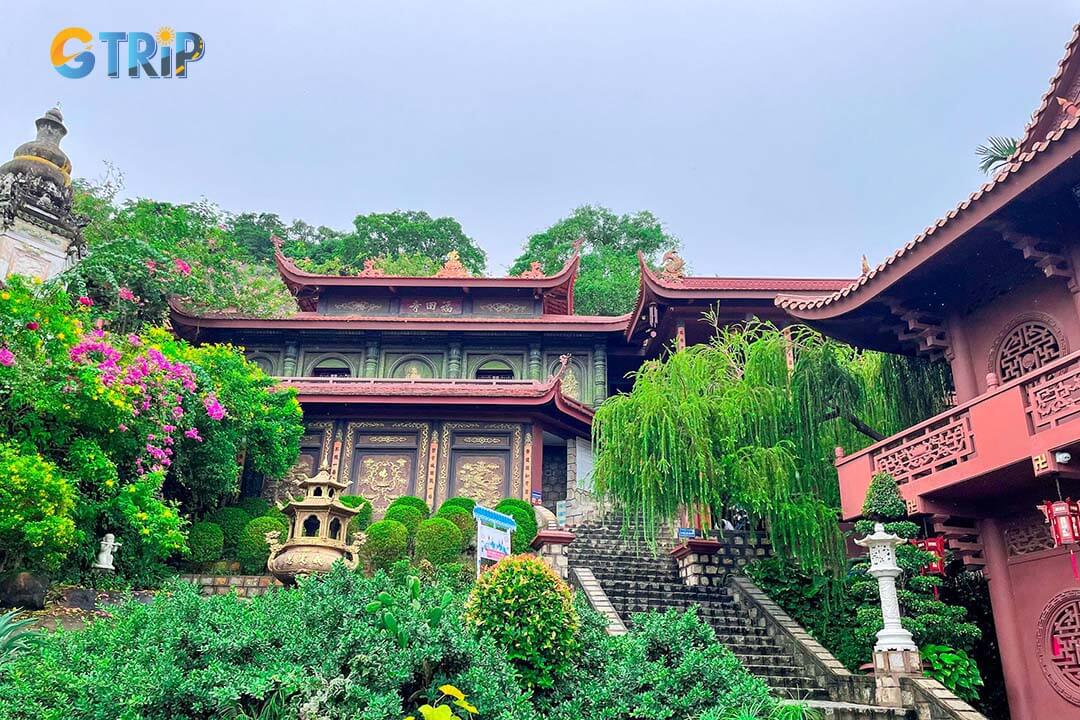
Hang Pagoda’s evolution from a humble retreat to a revered spiritual sanctuary is intertwined with legends and devotion, reflecting its deep-rooted cultural
Hang Pagoda architecture in An Giang
Hang Pagoda in Chau Doc, An Giang, is a unique combination of Vietnamese Buddhist temple architecture and natural caves, creating a sacred and peaceful spiritual site. Unlike traditional pagodas, Hang Pagoda is built into the slopes of Sam Mountain, harmonizing with the natural landscape. The pagoda is designed with many floors, intricate carvings and religious sculptures that reflect both Vietnamese and Khmer influences.
Unique cave architecture
One of the outstanding features of Hang Pagoda is its cave architecture, which seamlessly combines natural rock formations with Buddhist design elements. Upon entering the temple, visitors are greeted by an archway decorated with intricate carvings of dragons, lotus flowers and Buddhist deities, all of which represent protection and spiritual enlightenment. The entrance opens onto a series of stone corridors and halls that extend into the mountain, with dim lighting creating a peaceful yet mystical atmosphere.
Deeper inside, the temple’s main sanctuary is partly carved into the rock, with naturally formed walls and ceilings adding to the cave-like atmosphere. Stalactites and stalagmites mingle with man-made altars, creating a spectacular setting for worship and meditation. The temple’s strategic location in the heart of the mountain keeps the temperature cool all year round, providing a peaceful retreat for monks and pilgrims.
In addition, inside the cave, there are two shrines and two large statues of Thanh Xa and Bach Xa guarding the door, with their eyes lit by lamps, creating a mystical spiritual effect. According to legend, two fierce pythons were tamed by Mrs. Tho, adopting a vegetarian diet and protecting the area before vanishing upon her passing.
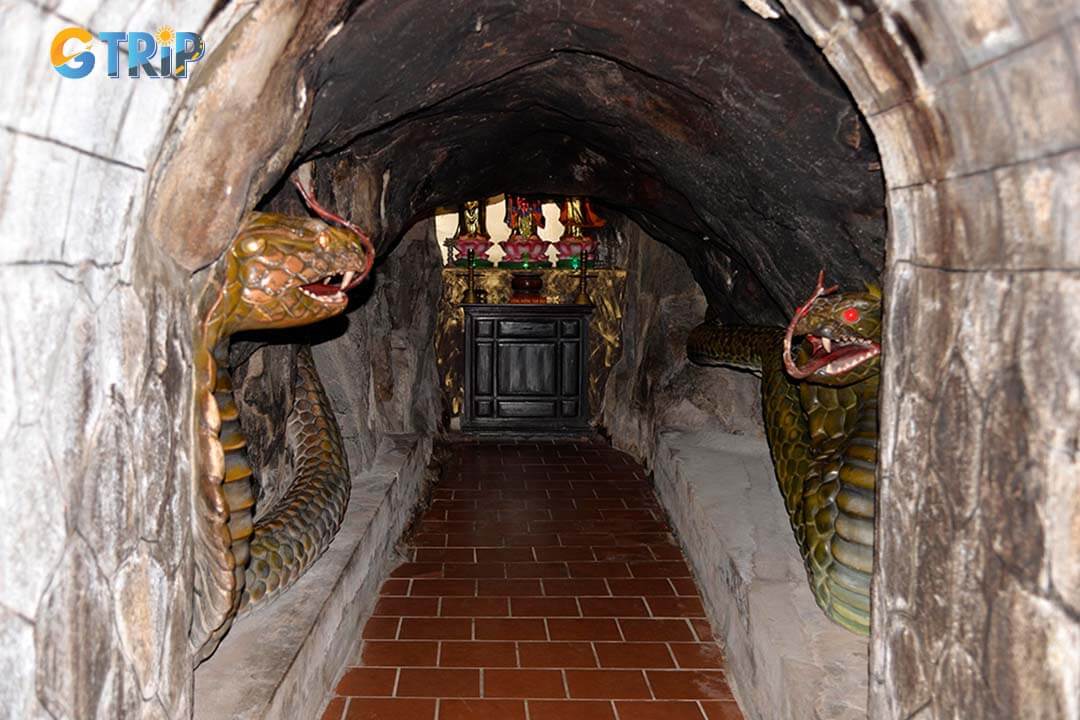
Hang Pagoda’s unique cave architecture blends natural rock formations with intricate Buddhist designs, creating a serene and mystical sanctuary for worship
Ancient structures and elaborate decorative details
The Hang Pagoda has ancient structures built in traditional Vietnamese and Khmer architectural styles. The tiled roofs, supported by intricately carved wooden beams, show delicate floral and cloud motifs, emphasizing the harmony between nature and spirituality. The walls and columns are decorated with embossed Buddhist scriptures, adding to the historical depth of the pagoda.
Inside the pagoda, there are many Buddha statues to be worshipped, each representing a different Buddhist tradition. Some of the statues are covered in gold leaf, dating back centuries, while others are made from materials such as marble, bronze, and wood. The most revered statue is that of Avalokiteshvara (Guan Yin), the Goddess of Mercy, housed in the main prayer hall. It is believed that this statue will bring blessings and protection to those who visit.
Sacred courtyard and beautiful view
In addition to the cave interior, the pagoda extends into an open courtyard, which houses incense burners, stone tablets, and prayer wheels for spiritual practice. The courtyard also contains smaller shrines dedicated to Buddhist deities and revered monks. Bonsai trees and lotus ponds add to the peaceful atmosphere of the pagoda, inviting visitors to pause and reflect.
One of the most appealing aspects of the Cave Pagoda is its beautiful view. From the upper floors, you can witness breathtaking panoramic views of Chau Doc’s lush landscape, rice paddies, and the winding Mekong River. The pagoda’s elevated location provides a peaceful vantage point where pilgrims can meditate while admiring the vast natural beauty of An Giang Province.
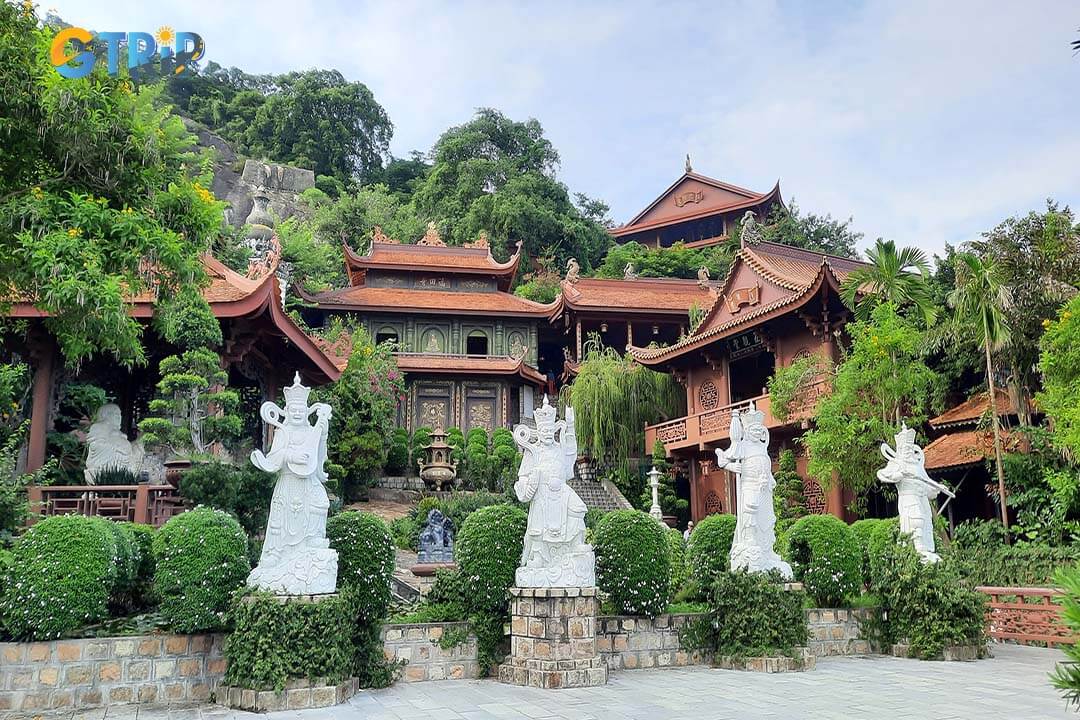
The pagoda’s serene courtyard and scenic vantage point provide a perfect blend of spiritual devotion and natural beauty
Best 3 things to do in Hang Pagoda
Perched on Sam Mountain, Hang Pagoda blends spirituality, culture, and stunning landscapes. You can explore Buddhist traditions, join meditation retreats, or admire panoramic Mekong Delta views. From sacred rituals to peaceful nature walks, the pagoda offers a serene and enriching experience.
1. Pray the best wishes
Visitors can stop by Hang Pagoda to pay their respects and soak in its peaceful, spiritual atmosphere. If you’re seeking a quiet moment of reflection or simply exploring the site, the pagoda offers a unique glimpse into Buddhist traditions. Many travelers also come to light incense and offer prayers for good fortune, health, and happiness. The serene surroundings, with the sounds of chanting monks and rustling leaves, create a truly calming experience.
If you're planning to visit during major celebrations like Vesak or Tet (Vietnam Lunar New Year), be prepared for crowds, as these are significant occasions for worshippers. These festivals feature special rituals, chanting ceremonies, and offerings, making them an ideal time to witness the deep devotion of Buddhist followers. Also, keep in mind that proper attire is essential dressing modestly is a simple yet meaningful way to show respect at this sacred site. Avoid wearing shorts or sleeveless tops, and consider bringing a scarf or shawl for added coverage.
2. Experience meditation and spiritual retreats
Hang Pagoda provides a tranquil setting for those looking to deepen their spiritual practice through meditation and retreats. The peaceful surroundings, combined with the rhythmic sounds of temple bells and chanting, create an ideal environment for mindfulness. You can participate in guided meditation sessions led by monks, helping to cultivate inner peace and clarity. If you're a beginner or an experienced practitioner, the pagoda offers a serene escape to reconnect with yourself.
Surrounded by lush greenery and nestled against Sam Mountain, Hang Pagoda allows visitors to experience meditation in harmony with nature. The fresh air, the gentle rustling of leaves, and the distant echoes of prayers enhance the sense of tranquility. Many retreat programs focus on mindfulness, self-reflection, and Buddhist teachings, offering valuable insights into spiritual growth. A visit here is not just a journey to a sacred site but also an opportunity to find balance and inner peace.
3. Enjoy the scenic views and photography spots
Perched on Sam Mountain, Hang Pagoda offers stunning panoramic views of Chau Doc and the Mekong Delta, making it a haven for photographers and nature lovers. Visitors can admire vast rice fields, winding rivers, and distant villages, especially breathtaking at sunrise and sunset. The ever-changing light throughout the day adds a unique charm to the landscape, making every visit a new visual experience.
Photography enthusiasts will find ideal spots throughout the pagoda, from the main courtyard’s wide-angle views to the scenic trails’ dramatic clifftop perspectives. Beyond photography, peaceful nature walks through rock formations and Buddhist shrines provide a serene escape, perfect for reflection and meditation. The tranquil surroundings enhance the spiritual ambiance, allowing visitors to connect with nature and find inner peace.
When is the best time to visit Hang Pagoda?
The best time to visit Hang Pagoda is during the dry season, which lasts from November to April. During these months, the cool, dry weather is perfect for exploring the temple and its scenic surroundings. You can explore the pagoda, admire its architecture, and participate in spiritual activities without weather disruptions.
From November to February, the climate is particularly refreshing, with mild temperatures that enhance the experience of visiting this sacred site. This period is also significant for religious travelers, as it aligns with various Buddhist ceremonies and local cultural events. It offers deeper insight into the spiritual practices observed at Hang Pagoda. Additionally, the clear skies and crisp air during these months provide excellent conditions for photography, allowing you to capture stunning images of the pagoda and its breathtaking surroundings.
While the dry season is the most recommended time to visit, you should also consider the timing of local festivals that take place at Hang Pagoda. These events attract numerous pilgrims and offer a unique opportunity to witness traditional Buddhist rituals and vibrant cultural celebrations. However, those who prefer a quieter atmosphere may want to plan their visit on non-festival days to fully appreciate the serene ambiance of this sacred site.
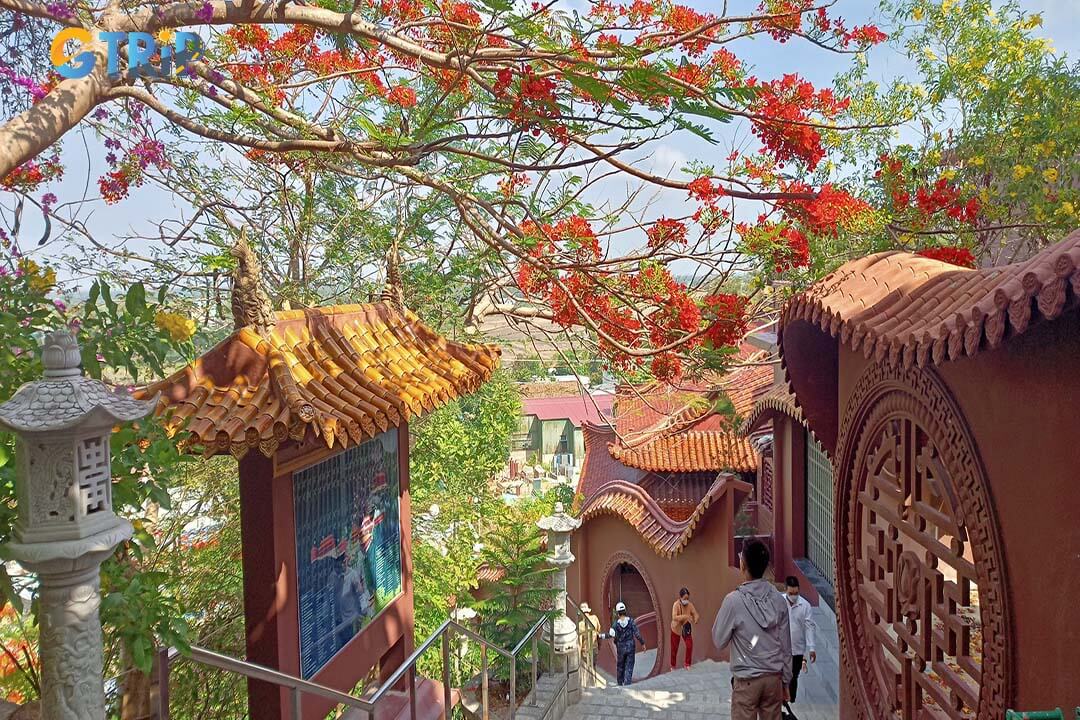
The best time to visit Hang Pagoda is during the dry season (November to April), when the weather is pleasant, ideal for exploration, spiritual activities, and photography
How to get to Hang Pagoda in Chau Doc An Giang?
Reaching Hang Pagoda is convenient, with multiple transportation options available from major cities in Vietnam. You can choose to travel by motorbike, car, or bus, depending on their preference for flexibility, comfort, or affordability.
By bus
For those traveling from Ho Chi Minh City, taking a bus to Chau Doc is one of the most economical and hassle-free options. Several reputable bus companies operate daily routes between Mien Tay Bus Station (Ho Chi Minh City) and Chau Doc Bus Station, with travel times averaging 6 - 7 hours. Once in Chau Doc, visitors can hire a taxi or motorbike taxi (xe ôm) to reach Hang Pagoda, which is just 5 km from the city center.
By car
Traveling by private car or taxi is ideal for those seeking a comfortable and flexible journey. From Ho Chi Minh City, the drive to Chau Doc takes approximately 5 - 6 hours via National Highway 1A and National Highway 91. Many tourists opt to book private car services for a hassle-free experience, allowing stops along the way to explore local attractions such as the Chau Phong Cham Ethnic Village, known for its rich cultural heritage.
By motorbike
For those who enjoy adventurous road trips, traveling by motorbike offers the best opportunity to soak in the beautiful landscapes of An Giang Province. The route from Ho Chi Minh City follows QL1A → QL80 → QL91, taking around 6 - 7 hours depending on road conditions and stops. Riding through rural areas, rice fields, and riverside roads provides a unique experience, though you should be prepared for long distances and ensure their motorbike is in good condition.

Reaching Hang Pagoda is easy, with options including motorbikes, cars, and buses, catering to different preferences for flexibility, comfort, and cost
Nearby attractions around Hang Pagoda
Exploring nearby attractions around Hang Pagoda provides visitors with an opportunity to immerse themselves in the rich cultural, spiritual, and natural landscapes of An Giang. Beyond the serene ambiance of the pagoda, the region is home to sacred temples, traditional villages, and stunning natural sites, offering a well-rounded travel experience.
1. Sam mountain
Rising approximately 284 meters above sea level, Sam Mountain is one of the most revered spiritual sites in An Giang. It is home to numerous pagodas, temples, and shrines, including the renowned Ba Chua Xu Temple, a major pilgrimage site where worshippers come to seek blessings for health, fortune, and prosperity. The Tay An Pagoda, with its unique blend of Vietnamese, Cham, and Indian architectural styles, is another must-visit landmark at the base of the mountain.
For adventure seekers, the mountain also offers a rewarding hike with panoramic views of An Giang’s sprawling rice fields, winding waterways, and the distant Cambodian border. The sunset at the summit is particularly mesmerizing, casting golden hues over the peaceful countryside.
2. Chau Doc Floating Village
A short distance from Hang Pagoda, the Chau Doc Floating Village provides an authentic look at the unique lifestyle of local fishing communities. The village consists of numerous floating houses, each equipped with an underwater fish farm. Visitors can board a boat to navigate through the village, interact with local fishermen, and witness their traditional fish-raising techniques.
One of the most fascinating aspects of the village is the Chau Doc Floating Market, where traders sell fresh produce, seafood, and handmade goods directly from their boats. This vibrant marketplace showcases the deep connection between the people of An Giang and the Mekong River, making it a culturally enriching stop on any itinerary.
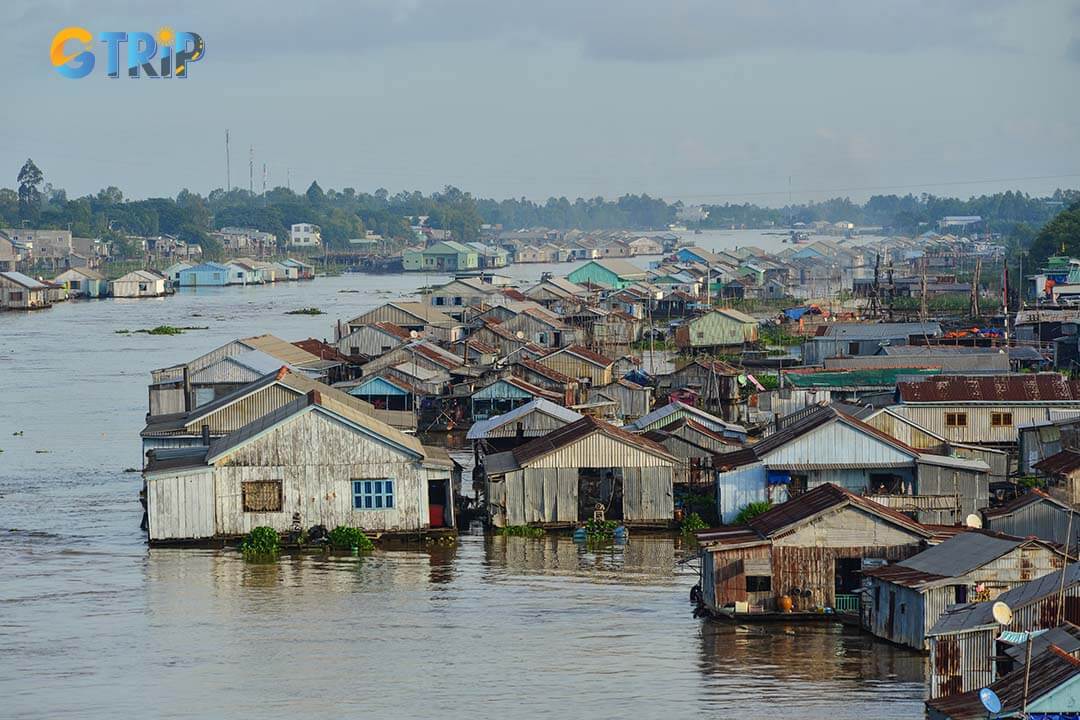
Chau Doc Floating Village offers a glimpse into the unique river-based lifestyle, featuring floating houses, fish farms, and a bustling boat market
3. Tra Su Cajuput Forest
For those seeking tranquility and a connection with nature, Tra Su Cajuput Forest is a must-visit destination. Covering an area of over 800 hectares, this ecological reserve is home to a diverse range of bird species, including storks, herons, and egrets. A boat tour through the dense, emerald-green cajuput trees offers a serene experience, with the chance to observe wildlife in its natural habitat.
You can also climb the observation tower for a breathtaking panoramic view of the vast wetland, particularly stunning during the floating season (September to November). When the water level rises the landscape transforms into a lush, water-covered paradise.
4. Chau Phong Cham Ethnic Village
Located near Chau Doc, Chau Phong Cham Ethnic Village offers insight into the rich heritage of the Cham Muslim community in Vietnam. The village is known for its stilt houses, intricately designed mosques, and skilled artisans who specialize in traditional Cham weaving. You can witness firsthand the craftsmanship involved in creating vibrant textiles, as well as learn about the Cham people's customs, beliefs, and daily life.
A highlight of the village is the Mubarak Mosque, one of the most significant Cham Muslim religious sites in Vietnam. With its elegant Islamic architecture and peaceful surroundings, the mosque provides a fascinating contrast to the predominantly Buddhist spiritual sites in An Giang.
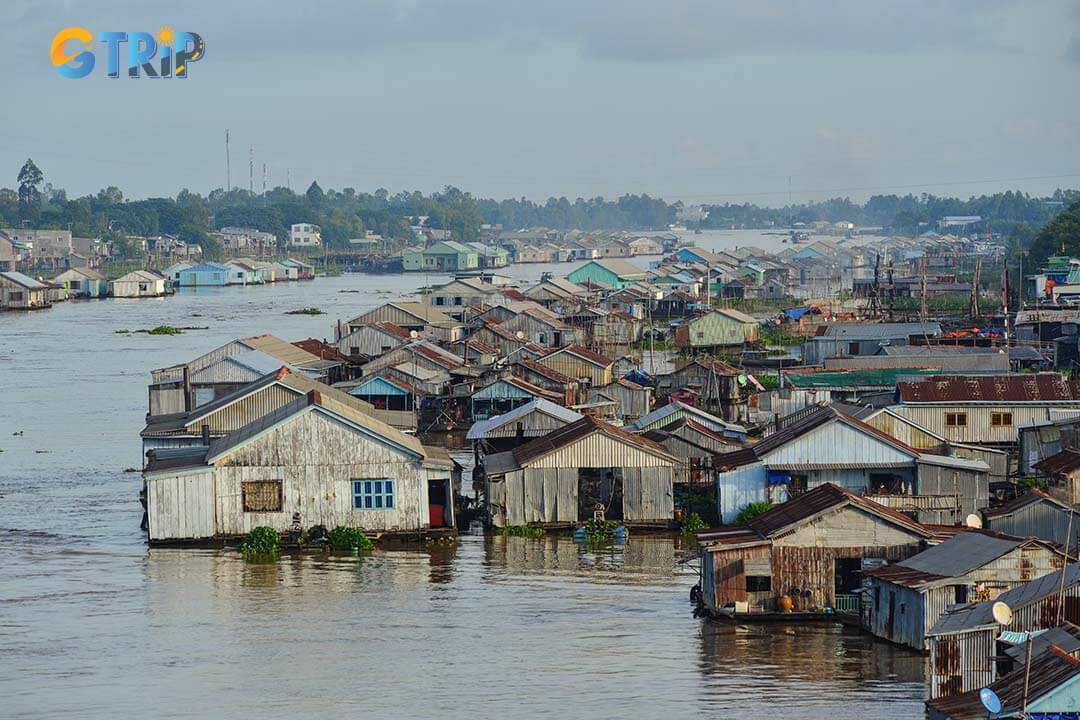
Chau Phong Cham Ethnic Village offers a cultural journey through the traditions, craftsmanship, and spiritual life of Vietnam’s Cham Muslim community
Important tips for visiting Hang Pagoda
Here are some essential tips to ensure a smooth and respectful visit to Hang Pagoda. Dressing appropriately, and observing local customs, these guidelines will help you make the most of your experience while maintaining the temple’s sacred.
- Wear light, breathable clothing - The climate can be hot and humid, so dress comfortably.
- Bring insect repellent - Mosquitoes can be common, especially in the early morning and evening.
- Carry an umbrella or hat - There is limited shade in some areas, so protect yourself from the sun.
- Respect monks - Avoid physical contact and keep a respectful distance.
- Follow the incense etiquette - Light an odd number of incense sticks when making an offering.
- Avoid loud conversations - Keep voices low to maintain the temple’s peaceful ambiance.
- Be mindful of your belongings - Crowded areas during festivals can attract pickpockets.
- Avoid bringing non-vegetarian food - Many Buddhist sites discourage consuming meat on the premises.
- Use eco-friendly travel items - Bring a reusable water bottle and avoid plastic waste.
- Observe how locals pray - If unsure, follow their lead when making an offering or bowing.
- Visit during the golden hour for photography - The morning and late afternoon light create stunning temple views.
- Respect the wildlife - Do not feed animals around the pagoda to avoid disruptions.

Follow these essential tips for a smooth, respectful visit to Hang Pagoda while preserving its sacred and peaceful ambiance
FAQ about Hang Pagoda
Here are some frequently asked questions to help you plan your visit to Hang Pagoda. Entrance fees, accommodation and photography rules, these answers will ensure a smooth and enjoyable experience at this sacred site.
1. What are the entrance fees for Hang Pagoda?
Hang Pagoda does not charge an entrance fee, making it an accessible spiritual site for both locals and tourists. However, visitors can contribute voluntary donations to support temple maintenance and religious activities. Additional costs may include incense offerings or rental fees for ceremonial attire if required during special religious ceremonies.
2. Are there any accommodation options near Hang Pagoda?
There are several accommodation choices near Hang Pagoda, ranging from budget guesthouses to mid-range hotels in Chau Doc. For a more immersive experience, travelers can opt for homestays, which offer insights into local culture and daily life. Those planning an extended visit may also explore nearby attractions, such as spiritual sites and traditional villages.
3. Is Hang Pagoda suitable for family visits?
Hang Pagoda is an excellent destination for families interested in Vietnamese Buddhist culture and scenic landscapes. The peaceful atmosphere allows children to learn about Buddhist traditions, while the surrounding nature offers a refreshing retreat. However, parents should keep an eye on younger children, as some areas have steep stairs and rocky pathways.
4. Can visitors take photographs inside the pagoda?
Photography is permitted in most outdoor areas of Hang Pagoda, capturing its scenic views and ancient architecture. However, in worship areas, visitors should follow signage and ask permission before taking photos. Flash photography and disruptive behaviour should be avoided to maintain the spiritual ambiance of the temple.
Hang Pagoda (Phuoc Dien Tu) stands as a remarkable Buddhist temple with a rich historical background, unique architecture, and a serene spiritual atmosphere. With its rich heritage and spiritual retreats, the pagoda offers a peaceful and insightful experience. Exploring its intricate ancient structures, participating in local festivals, or capturing the breathtaking scenic views, visitors will find plenty to appreciate.
For those planning a trip, understanding the best time to visit, available transportation options, and nearby attractions ensures a smooth and enriching journey. Following essential travel tips and respecting the site’s spiritual significance will enhance the experience. If you ever travel to An Giang, be sure to include Hang Pagoda in your itinerary. Discover more about this fascinating region and its must-visit destinations in Vietnam with GTrip - Vietnam Travel Agency.

